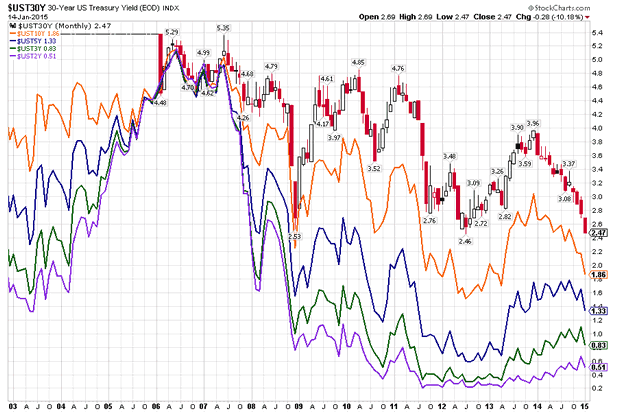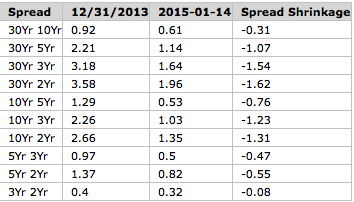In today’s Outside the Box, good friend Ben Hunt informs us that we have entered the cult phase of the Golden Age of the Central Banker:
We pray for extraordinary monetary policy accommodation as a sign of our Central Bankers’ love, not because we think the policy will do much of anything to solve our real-world economic problems, but because their favor gives us confidence to stay in the market. I mean, does anyone really think that the problem with the Italian economy is that interest rates aren’t low enough? Gosh, if only ECB intervention could get the Italian 10-yr bond down to 1.75% from the current 1.85%, why then we’d be off to the races! Really? But God forbid that Mario Draghi doesn’t (finally) put his money where his mouth is and announce a trillion euro sovereign debt purchase plan. That would be a disaster, says Mr. Market. Why? Not because the absence of a debt purchase plan would be terrible for the real economy. That’s not a big deal one way or another. It would be a disaster because it would mean that the Central Bank gods are no longer responding to our prayers.
But, he points out, the cult phase of any human society is a stable phase in the sense that, while change may happen, it will not happen from within:
There is such an unwavering faith in Central Bank control over market outcomes, such a universal assumption of god-like omnipotence within this realm, that any internal market shock is going to be willed away.
However, there is a minor catch: external market risk factors are all screaming red.
I’ve been doing this for a long time, and I can’t remember a time when there was such a gulf between the environmental or exogenous risks to the market and the internal or behavioral dynamics of the market. The market today is Wile E. Coyote wearing his latest purchase from the Acme Company – a miraculous bat-wing costume that prevents the usual plunge into the canyon below by sheer dint of will.
 Ben identifies the three most pressing exogenous risks as the “supply shock” of collapsing oil prices, a realigning Greek election, and the realpolitik dynamics of the West vs. Islam and the West vs. Russia. (You or I might want to expand Ben’s list with one or two of our own favorites; but the point is, it’s a big, bad, volatile world out there right now.) Ben admits that it feels a bit weird to have written on all three of his chosen topics a few weeks before each of them appeared on investors’ radar screens. “Call me Cassandra,” says Ben. (Naw, I’ll stay with Ben.)
Ben identifies the three most pressing exogenous risks as the “supply shock” of collapsing oil prices, a realigning Greek election, and the realpolitik dynamics of the West vs. Islam and the West vs. Russia. (You or I might want to expand Ben’s list with one or two of our own favorites; but the point is, it’s a big, bad, volatile world out there right now.) Ben admits that it feels a bit weird to have written on all three of his chosen topics a few weeks before each of them appeared on investors’ radar screens. “Call me Cassandra,” says Ben. (Naw, I’ll stay with Ben.)
I wouldn’t want to steal too much of Ben’s thunder here, but I just can’t help sharing with you the punch line to his piece: “The gods always end up disappointing us mere mortals.” This is one of Ben’s better pieces, and I really commend it to you as something you need to think about.
Before we examine our collective religious delusions (or at least our central banking delusions), let’s have a little fun. My friend Dennis Gartman (who could be the hardest-working writer in the business) found this gem and shared it with his readers this morning. It is about the supposed lack of environmental concern of the Boomer generation has. And some of you will read it that way.
But I want those of you who are of a certain age (ahem) to realize just how much your world has changed in the last 50 years. If you are young, yes, we really did all the stuff listed below. I personally experienced every one of the rather long list of activities mentioned by the “little old lady.” Major changes in lifestyle since then? No, not really. But I’ll grand you that things are a good deal more convenient and time-saving today. Now sit back and enjoy.
Checking out at the store, the young cashier suggested to the much older lady that she should bring her own grocery bags, because plastic bags are not good for the environment. The woman apologized to the young girl and explained, “We didn’t have this ‘green thing’ back in my earlier days.” The young clerk responded, “That’s our problem today. Your generation did not care enough to save our environment for future generations.” The older lady said that she was right – her generation didn’t have the “green thing” in its day. The older lady went on to explain: “Back then, we returned milk bottles, soda bottles and beer bottles to the store. The store sent them back to the plant to be washed and sterilized and refilled, so it could use the same bottles over and over. So they really were recycled. But we didn’t have the ‘green thing’ back in our day. Grocery stores bagged our groceries in brown paper bags that we reused for numerous things. Most memorable besides household garbage bags was the use of brown paper bags as book covers for our school books. This was to ensure that public property (the books provided for our use by the school) was not defaced by our scribblings. Then we were able to personalize our books on the brown paper bags. But, too bad we didn’t do the ‘green thing’ back then. We walked up stairs because we didn’t have an escalator in every store and office building. We walked to the grocery store and didn’t climb into a 300-horsepower machine every time we had to go two blocks. But you’re right, we didn’t have the ‘green thing’ in our day. Back then we washed the baby’s diapers because we didn’t have the throwaway kind. We dried clothes on a line, not in an energy-gobbling machine burning up 220volts. Wind and solar power really did dry our clothes back in the early days. Kids got hand-me-down clothes from their brothers or sisters (and cousins), not always brand-new clothing. But you’re right, young lady; we didn’t have the ‘green thing’ back in our day. Back then we had one TV, or radio, in the house – not a TV in every room. And the TV had a screen the size of a handkerchief [remember them?], not a screen the size of the state of Montana. In the kitchen we blended and stirred by hand because we didn’t have electric machines to do everything for us. When we packaged a fragile item to send in the mail, we used wadded up old newspapers to cushion it, not Styrofoam or plastic bubble wrap. Back then, we didn’t fire up an engine and burn gasoline just to cut the lawn. We used a push mower that ran on human power. We exercised by working, so we didn’t need to go to a health club to run on treadmills that operate on electricity.” But you’re right; we didn’t have the ‘green thing’ back then. We drank from a fountain when we were thirsty instead of using a cup or a plastic bottle every time we had a drink of water. We refilled writing pens with ink instead of buying a new pen, and we replaced the razor blade in a razor instead of throwing away the whole razor just because the blade got dull. But we didn’t have the ‘green thing back then. Back then, people took the streetcar or the bus, and kids rode their bikes to school or walked instead of turning their moms into a 24-hour taxi service in the family’s $45,000 SUV or van, which cost what a whole house did before the ‘green thing.’ We had one electrical outlet in a room, not an entire bank of sockets to power a dozen appliances. And we didn’t need a computerized gadget to receive a signal beamed from satellites 23,000 miles out in space in order to find the nearest burger joint. But, isn’t it sad, how the current generation laments how wasteful we old folks were just because we didn’t have the ‘green thing’ back then?”
I wonder what our grandchildren will be telling their grandchildren in 50 years… “I remember a time when we actually used combustion engines to drive our cars that belched out dirty gases. We actually had massive electricity-generating power plants and wires everywhere to deliver the electricity, rather than the small, efficient home units that produce free electricity for us now. We used something called glasses to help us see. People actually had to carry their communications devices around, and computers were measured in pounds not ounces. We had to do something called “typing” to write; and while we didn’t have to actually go to places called libraries like our grandparents did, we could and did spend all day searching through a disorganized Internet for what we needed. You weren’t connected biologically to your computer, so getting information in and out of it was a drag.
“People actually got sick and died; and though the situation was getting better, billions of people didn’t have enough food at night. People went to big stores to buy what was needed rather than just ordering it or producing it on the spot. We actually threw garbage away in huge resource-consuming “dumps” rather than completely recycling it into new products at the back of the house. It took like forever to get from one point to another. People actually had to “drive” their car rather than just getting in it and telling it where to go. And people died all the time in those cars – they were so dangerous and uncomfortable. In those days you couldn’t even instantly communicate with anybody by just thinking. You had to push buttons on that clumsy communication device you hauled around, and then talk into it; and if you lost it you were out of touch and out of luck. We didn’t even have intelligent personal robots in those days. It was so Stone Age.”
I could go on and on, but you get the drift. The changes in the last 50 years are simply a down payment on the change we’ll see and live in the next 50.
When I think about central banks and markets and try to figure out how to get preserve and grow assets from where we are today to where we will be in 10 years, it can be a rather daunting and sometimes even a depressing task. But then I think about what the world will be like and how much fun my grandkids are going to have, and I get all optimistic and smiling again.
Have a great week. The future is going to turn out just fine.
Your wondering if we will have flying cars analyst,
John Mauldin, Editor
Outside the Boxsubscribers@mauldineconomics.com
 This past week, after two years of “jawboning the world to death,” the European Central Bank (ECB) launched their version of quantitative easing or QE.
This past week, after two years of “jawboning the world to death,” the European Central Bank (ECB) launched their version of quantitative easing or QE.

 Ben identifies the three most pressing exogenous risks as the “supply shock” of collapsing oil prices, a realigning Greek election, and the realpolitik dynamics of the West vs. Islam and the West vs. Russia. (You or I might want to expand Ben’s list with one or two of our own favorites; but the point is, it’s a big, bad, volatile world out there right now.) Ben admits that it feels a bit weird to have written on all three of his chosen topics a few weeks before each of them appeared on investors’ radar screens. “Call me Cassandra,” says Ben. (Naw, I’ll stay with Ben.)
Ben identifies the three most pressing exogenous risks as the “supply shock” of collapsing oil prices, a realigning Greek election, and the realpolitik dynamics of the West vs. Islam and the West vs. Russia. (You or I might want to expand Ben’s list with one or two of our own favorites; but the point is, it’s a big, bad, volatile world out there right now.) Ben admits that it feels a bit weird to have written on all three of his chosen topics a few weeks before each of them appeared on investors’ radar screens. “Call me Cassandra,” says Ben. (Naw, I’ll stay with Ben.)
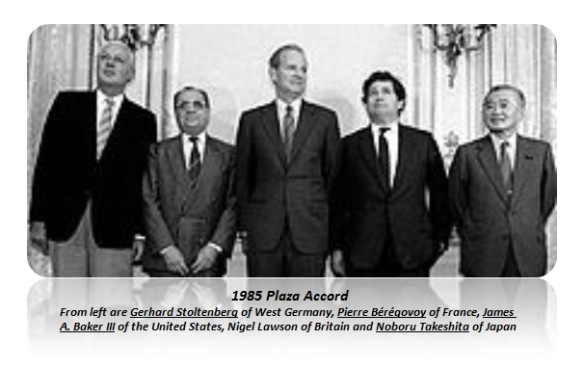
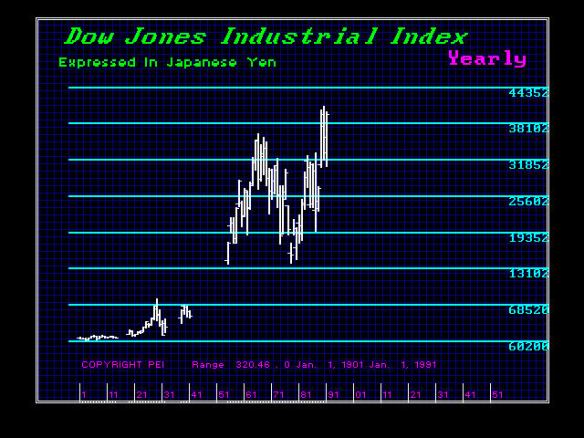
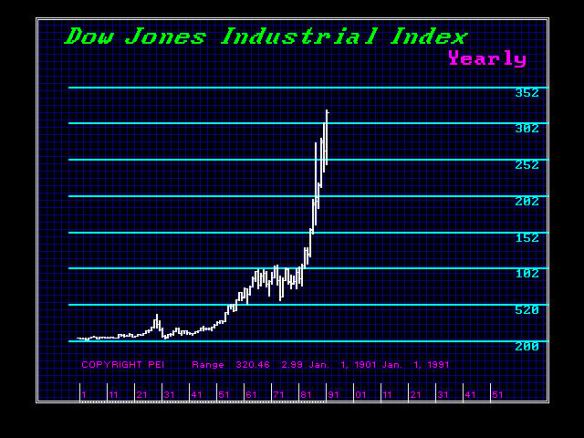

 On January 7th CNBC’s Rick Santelli and Steve Leisman engaged in a heated debate that posed an interesting question; is the free market at work keeping interest rates low, or is it the central banks’ put? This made me consider the real question to ask which is: Where would rates be if central banks didn’t exist?
On January 7th CNBC’s Rick Santelli and Steve Leisman engaged in a heated debate that posed an interesting question; is the free market at work keeping interest rates low, or is it the central banks’ put? This made me consider the real question to ask which is: Where would rates be if central banks didn’t exist?